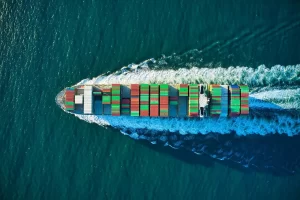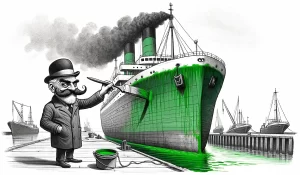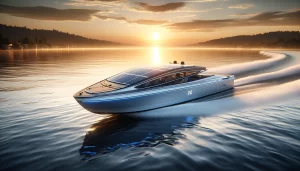The maritime industry is in need of fixing. It must find new ways to move cargo with less emissions. However, just like repairing a bicycle’s shifter, we can’t rely on a single tool to get the job done. There is no silver-bullet, as some may lead you to believe.
When the shifter on your favorite bicycle breaks, you need to repair it. If your handy, you’ll likely grab your toolbox. Imagine your frustration if when you open your toolbox all you find is a single rusty hammer. Almost any repair job, whether fixing a bike, a company, or even an industry will need at least a couple tools.
Maritime emissions reduction is top-of-mind for many folks in the maritime industry. Just this past October in a poll of industry stakeholders conducted by the Global Maritime Forum, respondents from 46 countries stated that ‘decarbonization of shipping’, ‘new environmental regulation’, ‘societal demands for sustainability’, and ‘failure of climate-change mitigation and adoption’ are four of the top ten most important issues impacting the maritime industry. More worrisome is that respondents say they are not prepared to deal with these same issues.
What are the Tools?
Depending how you label them, there are over three dozen different maritime emission reduction measures available to the industry. Each varies in cost, impact, and technological maturity but each has a role to play. There are so many that it makes it difficult for industry to know which ones to use. To help, one research project attempted to rank some of these tools on the basis of their emission reduction potential.
The International Maritime Organization (IMO), a UN regulatory body that oversees global shipping, has a goal to reduce greenhouse gas (GHG) emissions by 50 percent relative to 2008 levels. The researchers in this study believe that we need to reduce maritime emissions by close to 85 percent relative to 2010 levels if we want any chance to stay true to the Paris Agreement.
Their study reviewed more than 150 research papers and provides a comprehensive review of the potential for an assortment of maritime CO2 emission reduction measures. Using the results from these different studies the researchers created a range of emission reduction potential using the measures, relative to a business as usual case forecasted out to 2050. The results are in the box and whisker plot below.
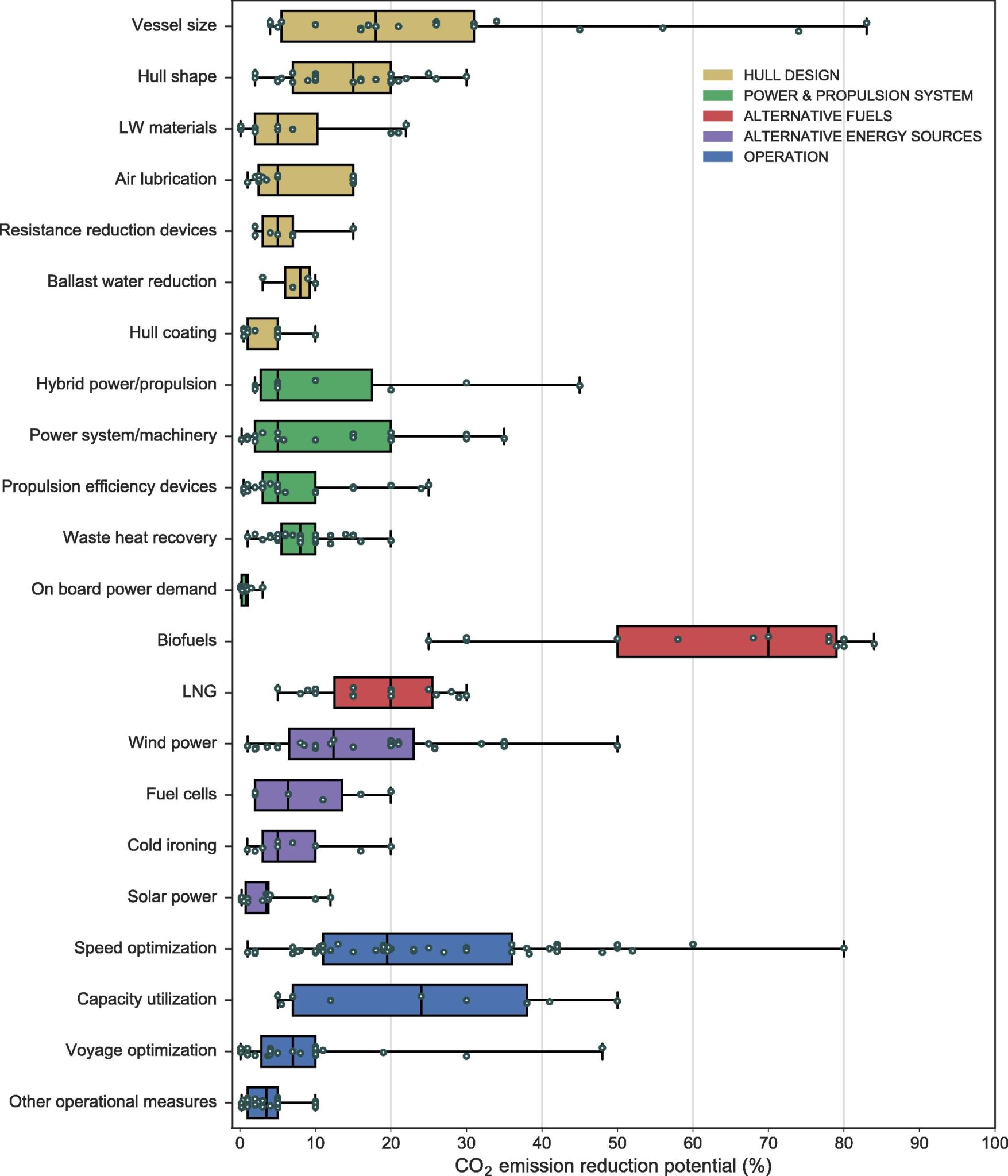
The researchers found sufficient data for 22 emission reduction measures. The dots indicate data points, the bars and whiskers indicate ranges. Maritime emissions reduction measures that show large ranges indicate a lack of agreement in the data, short ranges show more agreement within the research literature. A large number of data points in narrow ranges imply higher confidence in the results.
High Impact Tools
The results tell an intriguing story. Switching from fossil fuels to biofuels, slowing down while underway, and modifying the size are some of the top ranking results. However, these same measures also have some of the largest ranges, indicating the need for more research and data to fully understand their potential. Lo and behold, these are some of the same measures the industry is currently testing or advocating for, like this, this, or this. Some measures, like wave energy to reduce fuel consumption, didn’t have enough data to make it on this list.
Just like our bike repair job, one of these measures isn’t enough. The study’s “results indicate that no single measure is sufficient by itself to reach considerable sector-wide reductions.” The researchers advocate for a combination of these measures. Even biofuels, which might contribute up to a 77 percent reduction in an optimistic scenario doesn’t get to the magic number of 85 percent reduction used for this study.
DNV-GL, a consultancy and ship classification society, recently published their annual Energy Transition Outlook which includes a specialized report on the maritime industry. Their forecast utilizes a model that considers the emissions reduction impact of several high-level decarbonization measures, including: shipboard energy efficiency, speed reduction, alternative fuels, and logistics. According to their model, to reach the IMO 2050 goal all high-level measures they investigated will be needed. A toolbox full of maritime emissions reduction measures.
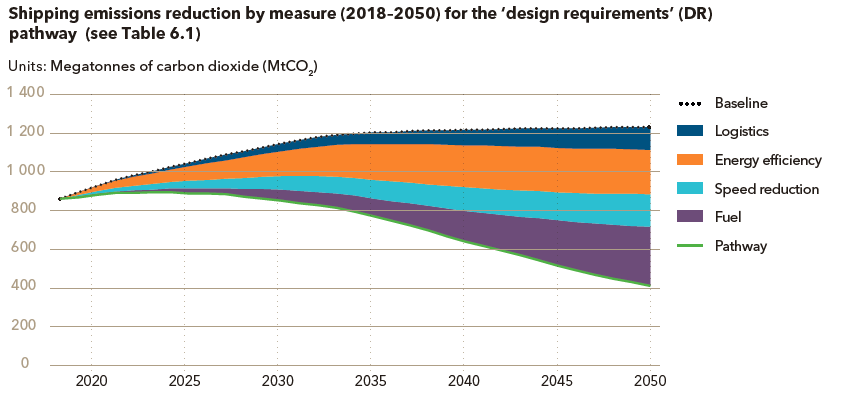
Knowing is Half the Battle
Knowing which tools to use is only part of the issue; one must also know how to use them too.
If you’re like me, learning how to use a new tool usually involves some profanities, a couple bruised fingers, and perhaps a band-aid or two. Things hardly ever go smoothly and mistakes happen. Learning can be risky. If you’re a company operating a business with tight margins and facing stiff competition, like shipping, the risk of disrupting your business to learn a new tool with an uncertain benefit will likely give you cause for concern.
Not all of these tools are well-received by industry. For example, cutting ship speed by 20 percent could reduce carbon dioxide emissions by up to 10 to 20 percent by some estimates; a powerful tool indeed. However at the most recent International Maritime Organization meeting this month, delegates declared that there is no desire for a speed reduction regulation as a way to combat emissions. Speed reduction may be an emission reduction tool, but perhaps it isn’t th.
Repairing things takes the right tools. We know what tools exist for the maritime industry to decarbonize. We even have strong suspicion which measures are high-leverage. But we still need to prove which ones are the most impactful for maritime emissions reduction and industry must learn how best to use them effectively. To meet, and exceed, IMO 2050 goals we’ll need to use lots of different measures, and we better start soon.

